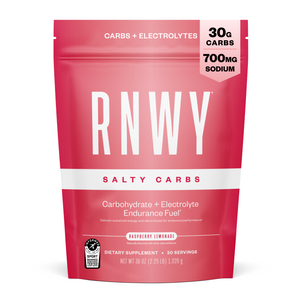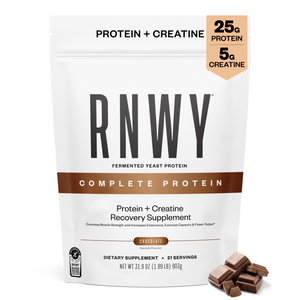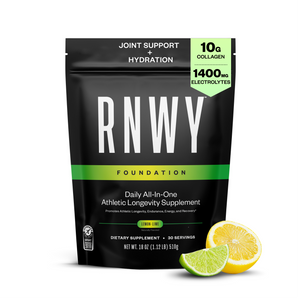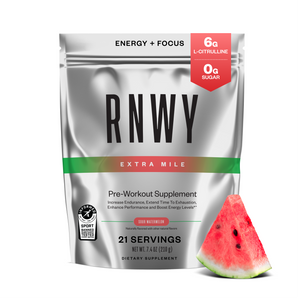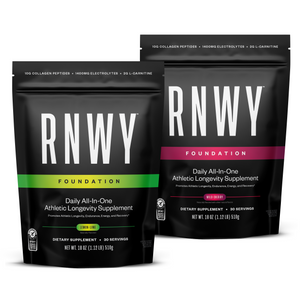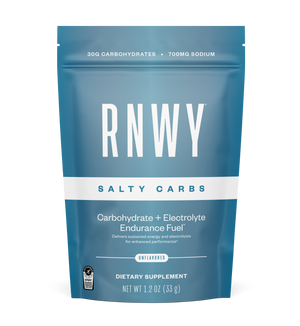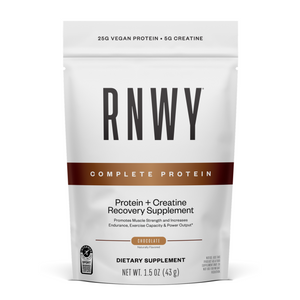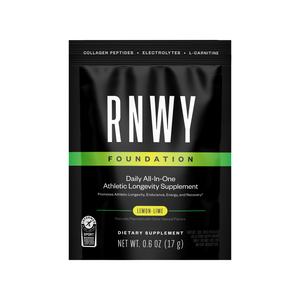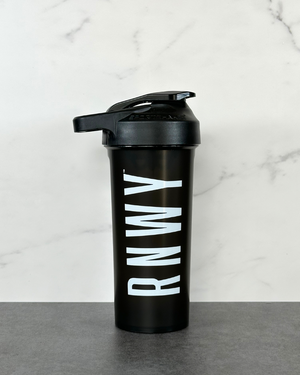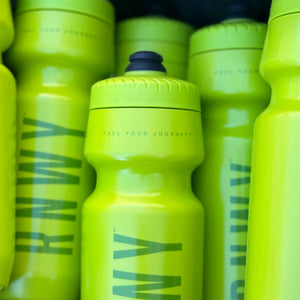For Runners, Hydration is More Than Just Quenching Thirst
We are made mostly of water. In fact, our bodies are 60-70% water (give or take), and healthy hydration is essential for all our body systems to function correctly. When we’re dehydrated, we just don’t work right.
But hydration isn’t just about making sure we’re taking on enough water, and dehydration isn’t just about being thirsty. That’s part of it, but not the full picture.
What is dehydration?
In the simplest terms, dehydration is when your body loses enough water to continue functioning properly. As far as running is concerned, the process goes like this: we sweat and lose water, so our blood volume decreases. This means less blood is returned to the heart, so the amount of blood pumped with each heartbeat decreases. The longer this goes on, the less oxygen-rich blood reaches your muscles doing all the work, so you’re producing less energy aerobically, and you become fatigued.
When we hydrate properly (and continue to do so on those long, hard runs), this vicious cycle is stopped in its tracks, and we can continue to perform at the best of our abilities.
Hydration and running
We know what you’re thinking: can’t I just drink water on my runs? Well yes, you can, but you’re only fixing part of the problem.
When we sweat, we lose electrolytes as well as water. The big one is sodium – you’ve probably noticed a salty sweat line on your running gear after a particularly hot summer’s run – but we also lose potassium and magnesium, and other electrolytes during heavy exercise, too. In fact, replacing lost electrolytes can be more important than replacing water during a long run, as these essential electrolytes and minerals help move the water around your body and cells to where it's needed.
Remember to check the weather
Why is running in the height of summer so much tougher than heading out in the cooler months? It goes back to that process we outlined above. In hotter weather, our bodies sweat more to try and keep us cool. As we sweat more, we lose more water, and our blood volume decreases. You’ll probably have noticed your heart rate on summer runs is substantially higher than the shoulder months, too. It’s all part of your body trying to keep you at peak performance, but the more dehydrated you become, the harder your body is working to reach it.
Conversely, in the winter, your thirst response is less active, so it’s possible to become dehydrated through forgetfulness. Set a timer to hydrate properly a few hours before your run, and make sure you’re re-hydrating when your workout is over, even if you don’t feel thirsty.
Signs of dehydration
Dehydration doesn’t look like you might expect. If any of the below signs are starting to appear, it’s time to drink up:
You’re thirsty: Obvious, yes. But the key takeaway here is if you’re thirsty, it’s possible that you’re already dehydrated. Thirst is the red flag of dehydration. Don’t wait until you’re thirsty to take action.
Heart rate: When you’re dehydrated while you run, your heart rate could be 10 to 15 beats higher than usual.
Urine color: When you’re well hydrated, your urine will be clear, or a pale yellow. Dark and strong-smelling urine is a sure sign of dehydration. Sorry for the TMI on this one.
Difficulty concentrating: If you’ve been pushing hard without hydrating properly, you might find it harder to get your head straight throughout the day. Not ideal if you’re squeezing in a run before a busy afternoon at your desk.
Fatigue: Is your usual 10K lap feeling harder than usual? It’s possible that you’re dehydrated. If you feel a sudden loss of energy during exercise, it’s much more likely to be a hydration problem than a fueling problem.
Dizziness or headaches, dry lips, and sunken eyes can all be signs of dehydration, too.
Tips for staying hydrated during long runs
It doesn’t have to be complicated. To keep your body at peak performance, try some of the RNWY crew’s hydration tips:
-
Build a healthy hydration habit every morning with RNWY Foundation.
-
Use a hydration pack on a long run, or stash a water bottle somewhere safe on your running loop.
-
Plan routes with water fountains or water sources nearby. Dip into a corner store if you need to.
-
Listen to your body and trust your thirst.
How much should I be hydrating on a run?
As we always say, everybody and every body is different. There’s no set answer, but there are guidelines. Depending on the weather, time of date, fueling, and even your outfit, you could be sweating out anywhere between 400 and 2,400ml of water in every hour of running.
The best course of action is prevention. Make sure you’re well hydrated before your run. Drink small amounts and regularly throughout the day, instead of slamming a pint of water and electrolytes before you head out the door.
Support your hydration with RNWY
Solid hydration provides a solid base for running. That’s why RNWY Foundation includes a broad spectrum of electrolytes and minerals that are essential for peak performance and rapid recovery. It’ll support your long-term joint health, too, with 10g bioactive collagen peptides in every serving.
Meanwhile, we include a healthy dose of sodium in Extra Mile, our caffeine-free pre-workout, to help replenish the salt you lose through sweat. RNWY’s got your hydration covered.
Read more: Embrace the Suck: the RNWY Guide to Running in Cold Weather
Read more: Are Mushrooms the Future of Athletic Protein?
Read more: Why the Athlete's Collagen is Our Secret Weapon
